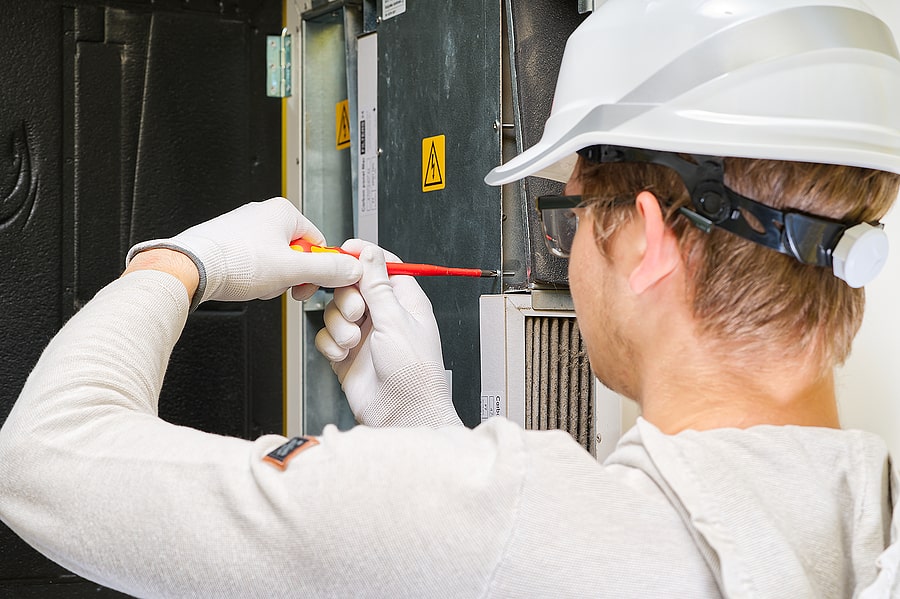An operating furnace is so critical for your home. If you are inspecting your unit and notice that it is leaking, you have a problem at hand. A leaking furnace is never fun to deal with, and it can be confusing why it is leaking in the first place. We are going to break down some common causes, signs, and risks of a leaking furnace. Knowing these items is valuable considering the cost of a furnace and importance of a working furnace.

Common Causes:
Clogged Condensate Drain Line: This is one of the most common causes of a furnace water leak. Dirt, debris, or algae may amass in the drain line which interferes with the flow of condensation away from the furnace. Resulting in water to be backed up and the unit may potentially overflow.
Cracked or Damaged Condensate Pan: If your condensate pan is cracked or damaged, it may not contain water which can lead to leaks surrounding the furnace. The condensate pan is intended to collect water produced throughout the combustion process. During that process, there is a chance for cracks or damage to occur.
Improperly Installed or Damaged Flue Pipe: Condensation will add up and leak back to the furnace if the flue pipe was improperly installed or somehow was damaged, leading to water leaks. This pipe plays an important role as it directs exhaust gases away from the furnace.
Familiarizing yourself with these common causes is beneficial considering how important a furnace is to your home. This way, you can keep an eye out for certain items involving your furnace and react quicker to a problem if one arises.
Common Signs:
Water Pooling Around the Furnace: This is the most obvious sign. If you see water pooling around your unit on the floor or close to the base of your furnace, then you’ve got a leaking furnace!
Dampness or Water Stains: Inspect the walls and surfaces close to the furnace to identify any dampness or water stains. There is the possibility of the water leaking to reach to a wall depending on where your furnace is located.
Moldy or Musty Odors: If you notice a moldy or musty odor near your furnace, then your furnace may be leaking. Mildew and mold are known to grow due to excess moisture. Both can damage your home or worse, cause health issues.
Sure these signs are simple to detect, but knowing them can go a long way in preventing your furnace from deteriorating and avoiding other potential risks.
Risks to Consider:
Property Damage: We mentioned dampness to walls and other surfaces may be impacted by a leaking furnace, but there is the possibility that the leak could reach to your furniture. This can result in a hefty repair price or replacement of furniture.
Electrical Threats: The leak could be near electrical outlets/components in your home which is an alarming hazard. Possibilities of power outages, electrical fires, or short circuits may occur.
Mold Growth: As we mentioned beforehand, mold is unappealing to deal with and can cause health risks if not dealt with promptly. Also, mold can spread at a quick rate, so handling this situation sooner rather than later can prevent the mold from spreading to other areas.
Contact the Experts
If you run into any issues or identify any of the signs mentioned in this blog, make sure to call the local pros at Hattersley. We have experienced technicians that are ready to ensure your furnace is running to its full ability with no problems.



